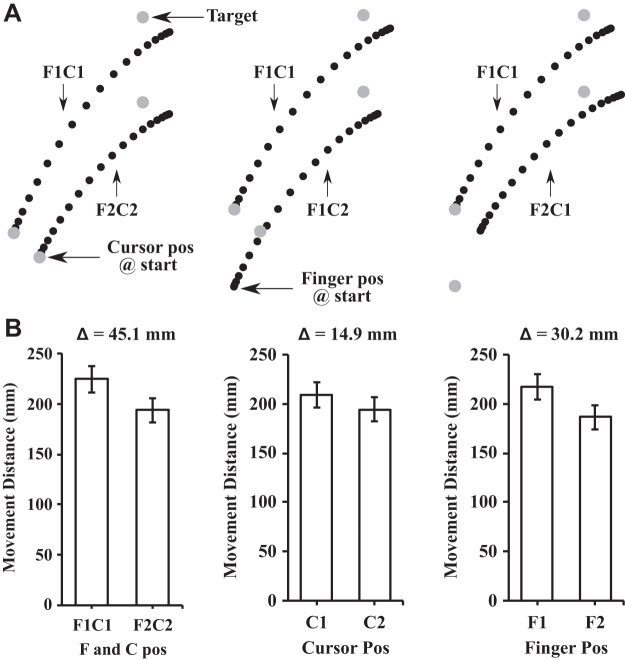Fig. 4.
A: mean trajectories for the preexercise aiming conditions. Left: aligned conditions (i.e., F1C1 and F2C2); middle: different cursor positions with the same finger position (i.e., F1C1 and F1C2); right: different finger positions with the same cursor position (i.e., F1C1 and F2C1). Each dot represents the position at every 5% of the movement time. B: mean movement distances in the different finger and cursor positions. The Δ value describes the difference in mean movement distance between the conditions in the associated bar graphs. To calculate proprioceptive weight, the differences in movement distance (Δ = 30.2) between the 2 finger starting positions conditions (i.e., F1 and F2) were collapsed across cursor positions and divided by the difference in movement distance (Δ = 45.1) in the aligned conditions (i.e., F1C1 and F2C2). Error bars depict means ± SE.

